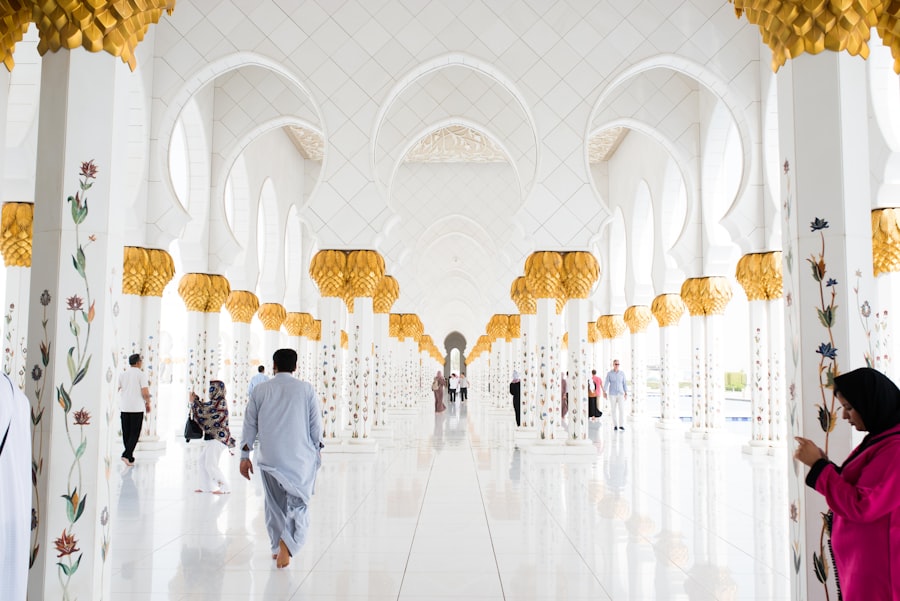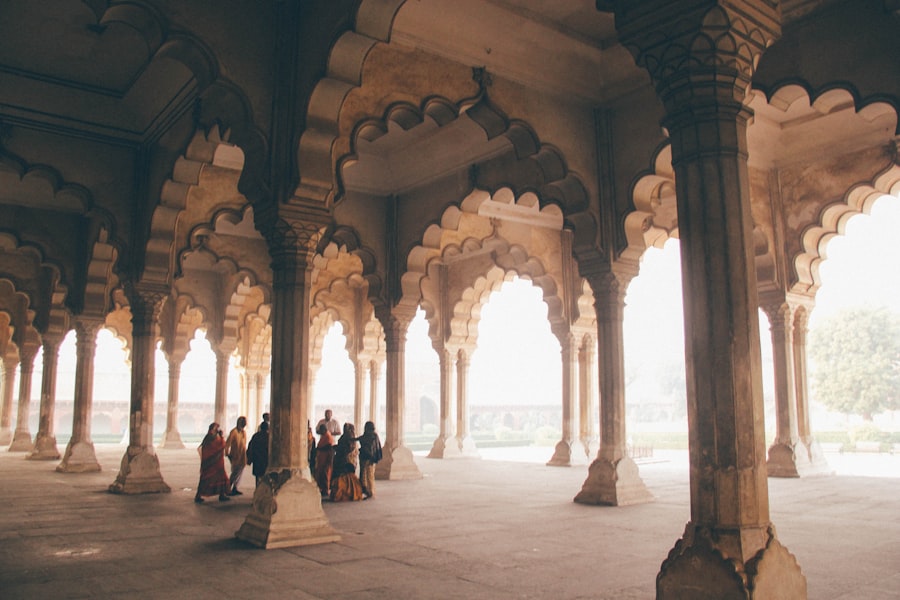The Mauryan Empire, which flourished from approximately 322 to 185 BCE, represents a pivotal moment in the history of ancient India, marked by significant advancements in art and architecture. Founded by Chandragupta Maurya and later expanded under the reign of his grandson Ashoka, the empire was not only a political powerhouse but also a cultural beacon that fostered the development of a distinctive artistic style. The period is characterized by a synthesis of indigenous traditions and influences from neighboring cultures, particularly those of Persia and Greece, resulting in a unique aesthetic that would leave an indelible mark on the subcontinent.
Mauryan art and architecture are best understood within the context of the empire’s political and religious transformations. The rise of Buddhism during Ashoka’s reign played a crucial role in shaping artistic expressions, as the emperor embraced the religion and sought to propagate its teachings through monumental structures and sculptures. This era saw the emergence of stupas, pillars, and rock-cut caves, which served not only as religious symbols but also as expressions of imperial power and cultural identity.
The artistic endeavors of this period reflect a deep engagement with themes of spirituality, morality, and governance, making Mauryan art a rich field for exploration.
Key Takeaways
- Mauryan art and architecture flourished during the reign of the Mauryan Empire in ancient India, from 322 BCE to 185 BCE.
- Mauryan sculpture is known for its realistic portrayal of human and animal figures, with an emphasis on naturalism and attention to detail.
- The Mauryan Empire introduced architectural innovations such as the use of polished stone and the construction of monumental pillars with inscriptions.
- The influence of Mauryan art and architecture can be seen in later periods, particularly in the development of Buddhist art and architecture.
- The preservation and rediscovery of Mauryan art and architecture has been a focus of archaeological efforts, leading to a greater understanding of this ancient civilization’s artistic achievements.
Mauryan Sculpture and Its Characteristics
Mauryan sculpture is renowned for its remarkable realism and intricate detailing, showcasing a high level of craftsmanship that was unprecedented in Indian art. One of the most iconic examples of this sculptural tradition is the Lion Capital of Ashoka, which originally crowned one of the pillars erected by the emperor. This masterpiece features four lions standing back to back, symbolizing strength and courage, and is notable for its exquisite attention to anatomical accuracy and expression.
The Lions are flanked by a wheel (the Ashoka Chakra) and other motifs that convey the principles of dharma, or righteous living. This sculpture not only served as a symbol of the Mauryan Empire but also became an enduring emblem of India itself. In addition to the Lion Capital, Mauryan sculpture includes a variety of other forms, such as reliefs and free-standing figures.
The depiction of human figures during this period reflects a shift towards naturalism, with artists paying close attention to proportions, posture, and facial expressions. The sculptures often portray deities, celestial beings, and scenes from everyday life, revealing insights into the social and cultural milieu of the time. The use of polished stone, particularly sandstone, allowed for fine detailing and a smooth finish that enhanced the visual appeal of these works.
Architectural Innovations of the Mauryan Empire

The architectural achievements of the Mauryan Empire are equally impressive, characterized by monumental structures that served both religious and administrative purposes. One of the most significant innovations was the construction of stupas—domed structures that housed relics associated with the Buddha. The Great Stupa at Sanchi is perhaps the most famous example, featuring a massive dome surrounded by a circular walkway for circumambulation.
This architectural form not only served as a focal point for Buddhist worship but also exemplified the engineering prowess of the Mauryans, who employed advanced techniques in stone masonry and construction. In addition to stupas, the Mauryan Empire is known for its impressive pillars, which were often inscribed with edicts promoting moral conduct and governance.
The pillars served both as markers of territory and as instruments for disseminating Ashoka’s messages on dharma. The use of pillars as a medium for communication reflects an innovative approach to architecture that combined functionality with artistic expression. Moreover, rock-cut architecture emerged during this period, with caves such as those at Barabar showcasing sophisticated techniques in carving directly into rock faces.
These caves served as monastic retreats for Buddhist monks and exemplified the Mauryan commitment to creating spaces conducive to spiritual practice.
Influence of Mauryan Art and Architecture on Later Periods
The artistic legacy of the Mauryan Empire had a profound influence on subsequent periods in Indian history, shaping the development of art and architecture for centuries to come. The stylistic elements established during this era can be seen in later dynasties such as the Shunga and Gupta empires, which adopted and adapted Mauryan motifs in their own artistic expressions. For instance, the emphasis on naturalism in sculpture continued to evolve during these periods, leading to even more refined representations of human figures and deities.
Furthermore, the architectural innovations introduced by the Mauryans laid the groundwork for future monumental constructions across India. The concept of stupas became central to Buddhist architecture, influencing not only local practices but also spreading to other regions in Asia as Buddhism expanded along trade routes. The design principles established during the Mauryan period can be traced in later stupas such as those at Amaravati and Nagarjunakonda.
Additionally, the use of pillars as commemorative structures persisted in various forms throughout Indian history, culminating in grander designs during the medieval period.
Preservation and Rediscovery of Mauryan Art and Architecture
The preservation of Mauryan art and architecture has been a complex journey marked by both neglect and rediscovery over centuries. Many structures from this period fell into disrepair after the decline of the Mauryan Empire, with natural elements contributing to their deterioration. However, some sites remained relatively intact due to their significance as pilgrimage destinations for Buddhists.
The Great Stupa at Sanchi, for example, continued to attract visitors long after its construction, leading to ongoing maintenance efforts that helped preserve its integrity. The rediscovery of Mauryan art began in earnest during the British colonial period in India when archaeologists and historians started to explore ancient sites systematically. Notable figures such as Alexander Cunningham played a crucial role in excavating sites like Sanchi and Bharhut, bringing attention to their historical significance.
The establishment of archaeological surveys led to a greater understanding of Mauryan art’s context within Indian history. As scholars began to analyze inscriptions and sculptures more critically, they uncovered insights into the socio-political landscape of the time, further enriching our comprehension of this remarkable period.
Legacy of Mauryan Art and Architecture in Modern India

The legacy of Mauryan art and architecture continues to resonate in modern India, influencing contemporary artistic practices and cultural identity. The Lion Capital of Ashoka has been adopted as a national emblem, symbolizing India’s sovereignty and democratic values. This emblem serves as a reminder of the enduring principles espoused by Ashoka—non-violence, tolerance, and social responsibility—values that remain relevant in today’s society.
Moreover, modern architects often draw inspiration from Mauryan architectural principles when designing public spaces and monuments. The emphasis on harmony with nature and community engagement can be traced back to the thoughtful designs of ancient stupas and pillars. Additionally, contemporary artists frequently reference Mauryan motifs in their work, blending traditional techniques with modern sensibilities to create pieces that honor India’s rich artistic heritage while addressing contemporary themes.
In conclusion, Mauryan art and architecture represent a foundational chapter in India’s cultural history that continues to inspire generations. From its remarkable sculptures to its innovative architectural forms, this period laid the groundwork for future artistic developments while leaving an enduring legacy that shapes India’s identity today.
If you are interested in exploring the interplay of moral rights, duties, and virtue in social ethics, you may find this article to be a fascinating read. It delves into the complexities of ethical decision-making and the importance of upholding moral values in society. Just as the Mauryan Art and Architectural Innovations reflected the values and beliefs of ancient Indian society, understanding moral rights and duties can provide insight into the ethical foundations of a nation.
FAQs
What is Mauryan art?
Mauryan art refers to the art and architectural style that developed during the Mauryan Empire in ancient India, which lasted from 322 BCE to 185 BCE. It is known for its monumental and grand structures, as well as its use of stone and rock-cut architecture.
What are the key characteristics of Mauryan art?
Key characteristics of Mauryan art include the use of polished stone pillars, rock-cut architecture, and the incorporation of Buddhist and Hindu motifs and symbols. The art also reflects a sense of grandeur and power, with an emphasis on monumental structures and sculptures.
What are some examples of Mauryan architectural innovations?
Some examples of Mauryan architectural innovations include the construction of large stone pillars, such as the famous Ashoka pillars, which were inscribed with edicts and placed at strategic locations across the empire. The Mauryans also developed the use of rock-cut architecture, creating caves and monolithic structures out of solid rock.
How did Mauryan art influence later Indian art and architecture?
Mauryan art and architectural innovations had a significant impact on later Indian art and architecture. The use of polished stone pillars and rock-cut architecture continued to be prominent in subsequent periods, and the motifs and symbols used in Mauryan art, particularly those related to Buddhism, continued to be influential in Indian art for centuries to come.






















+ There are no comments
Add yours